Whether we should call Berlage or Zwart the designer of this spectacular breakfast service, we cannot say. Let’s call it a shared effort. But regardless of its designer, this dinnerware has earned a prominent place in the history of Dutch art. All important Dutch museums with design departments display it proudly. The display in the Amsterdam Rijksmuseum - that has just been reopened after years of renovation - shows off its beauty particularly well. Museum Boijmans van Beuningen in Rotterdam and the Gemeente Museum in The Hague also usually have it on display.



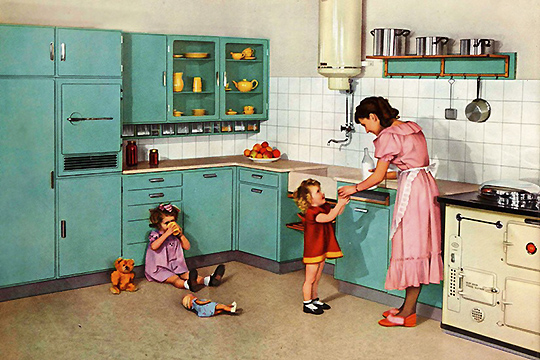
photo: Nationaal Glasmuseum Leerdam
The Bruynzeel kitchen
Piet Zwart became one of the most important Dutch industrial and graphic designers of the twentieth century. One of his most successful designs was the kitchen made for the Bruynzeel company in 1933. It consists of many different cupboards that could be placed either under or above the work surface. This seems standard now, but at the time it was a novelty in the Netherlands.
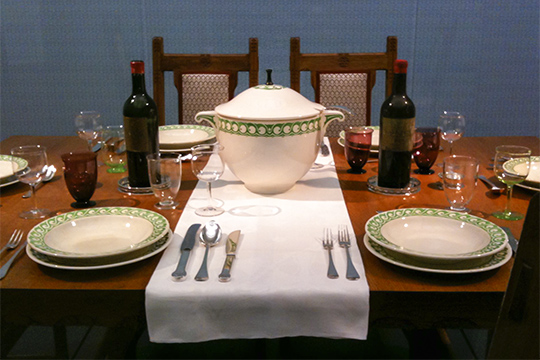
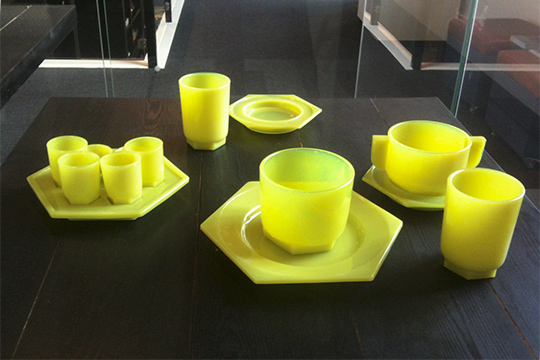
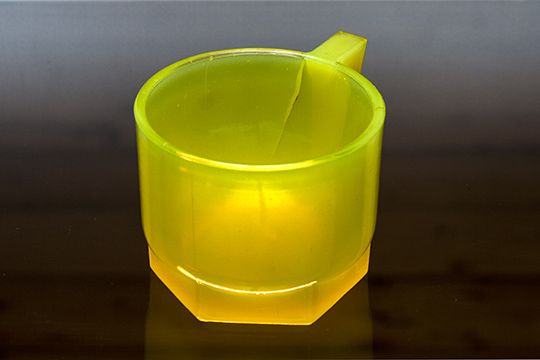
Blast!
In museums you’ll notice that this set is often displayed without lids. We do not know why this is and we dare not try it out experimentally. Perhaps hot water vapour caused too much strain and they shattered?
Faience en Tegelfabriek Holland
for 't Binnenhuis:
part of dinner service (1904 - 1905)
H. Berlage
(collection Gemeentemuseum Den Haag)
Crack
This cup shows what happened. It was part of a tea service that had been presented to the owner as a promotional gift. After it had sat in a glass display for years, the family decided it wanted to use it at least once. The first cup hadn’t even been poured when a sharp pop was heard: the glass had cracked.
Edification
It was assumed that beautiful and better-quality products would edify the masses and improve their taste. In this sense, Berlage’s pressed-glass breakfast service had a missionary task. But alas, despite everybody’s good intentions the ideal was never achieved. Manufacturing such a set proved much too expensive. Intended for working class tables it found its way only to the showcases of the wealthy.
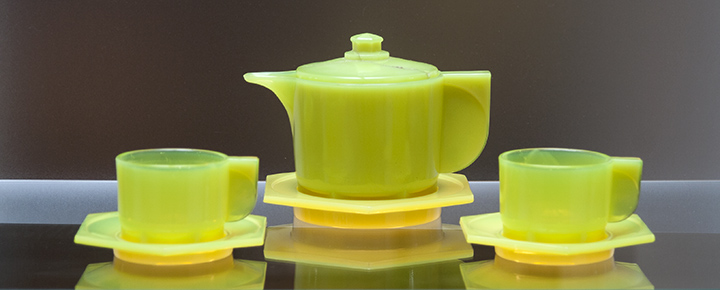
Setback
But however wonderful its design, Berlage and Zwart’s breakfast service wasn’t a success. Zwart blamed manufacturing difficulties: ‘The technology available then wasn’t up to the task yet. Our breakfast service turned out to be too heavy for daily use.’
But that wasn’t all of it. The closed handles made it hard to hold the heavy cups steady, certainly when they were filled with hot tea. And the pressed glass was an even bigger problem. Zwart and Berlage had assumed it would bear the heat of boiling water, but this turned out to be an illusion.
Everything fit together
This breakfast service must have struck people as futuristic. And in a sense, it was. It anticipated utility demands that in the Netherlands would only become standard after the second World War.
Piet Zwart: 'I designed all kinds of extra features. Everything fit together; the lid to one piece could also be used for another piece.'
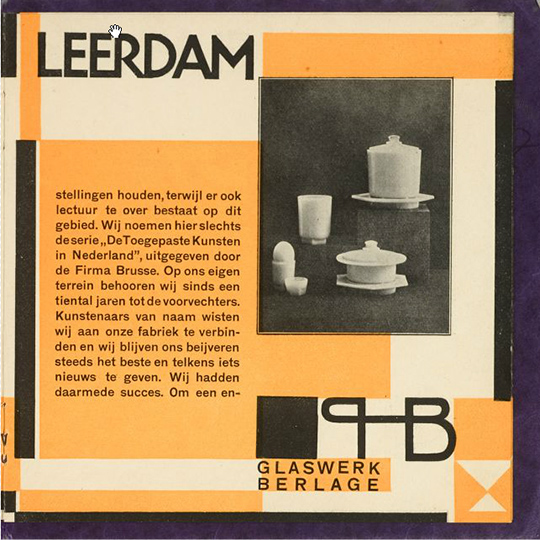
Breakfast service by Berlage and Zwart
page 2
